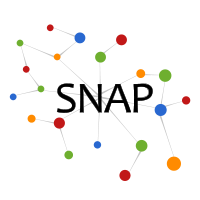JODIE: Predicting Dynamic Embedding Trajectory in Temporal Interaction Networks
Please check the GitHub repository for the latest updates.
JODIE is a representation learning framework for temporal interaction networks. Given a sequence of entity-entity interactions, JODIE learns a dynamic embedding trajectory for every entity, which can then be used for various downstream machine learning tasks. JODIE is fast and makes accurate predictions on temporal interaction network.
Motivation
Temporal interaction networks provide an expressive language to represent time-evolving and dynamic interactions between entities. Representation learning provides a powerful tool to model and reason on networks. However, as networks evolve over time, a single (static) embedding becomes insufficient to represent the changing behavior of the entities and the dynamics of the network.

JODIE is a representation learning framework that embeds every entity in a Euclidean space and their evolution is modeled by an embedding trajectory in this space. JODIE learns to project/forecast the embedding trajectories into the future to make predictions about the entities and their interactions. These trajectories can be trained for downstream tasks, such as recommendations and predictions. JODIE is scalable to large networks by employing a novel t-Batch algorithm that creates batches of independent edges that can be processed simulaneously.
Video
A short video description of JODIE:
Paper, Presentation, and Poster
The paper can be downloaded here.The presentation is coming soon.
The poster is coming soon.
Code
JODIE is implemented in PyTorch and can be easily integrated into other machine learning pipelines. Code and implementation details can be found on GitHub.Datasets
We created the following four datasets for the experiments. Please cite our paper (BibTeX below) if you use any of the datasets in your work. Please see the GitHub code page for details on the data format.References
Predicting Dynamic Embedding Trajectory in Temporal Interaction Networks. S. Kumar, X. Zhang, J. Leskovec. ACM SIGKDD International Conference on Knowledge Discovery and Data Mining (KDD), 2019.
The following BibTeX citation should be used if the paper, code, or dataset is used:
@inproceedings{kumar2019predicting,
title={Predicting Dynamic Embedding Trajectory in Temporal Interaction Networks},
author={Kumar, Srijan and Zhang, Xikun and Leskovec, Jure},
booktitle={Proceedings of the 25th ACM SIGKDD international conference on Knowledge discovery and data mining},
year={2019},
organization={ACM}
}



